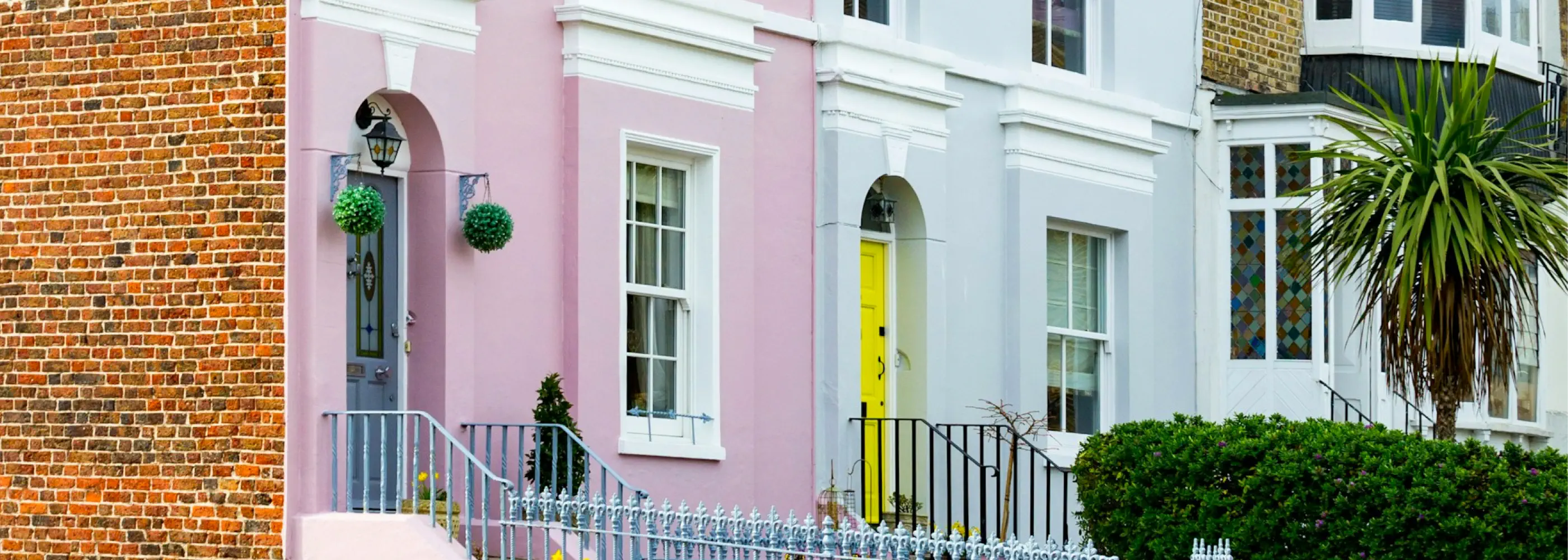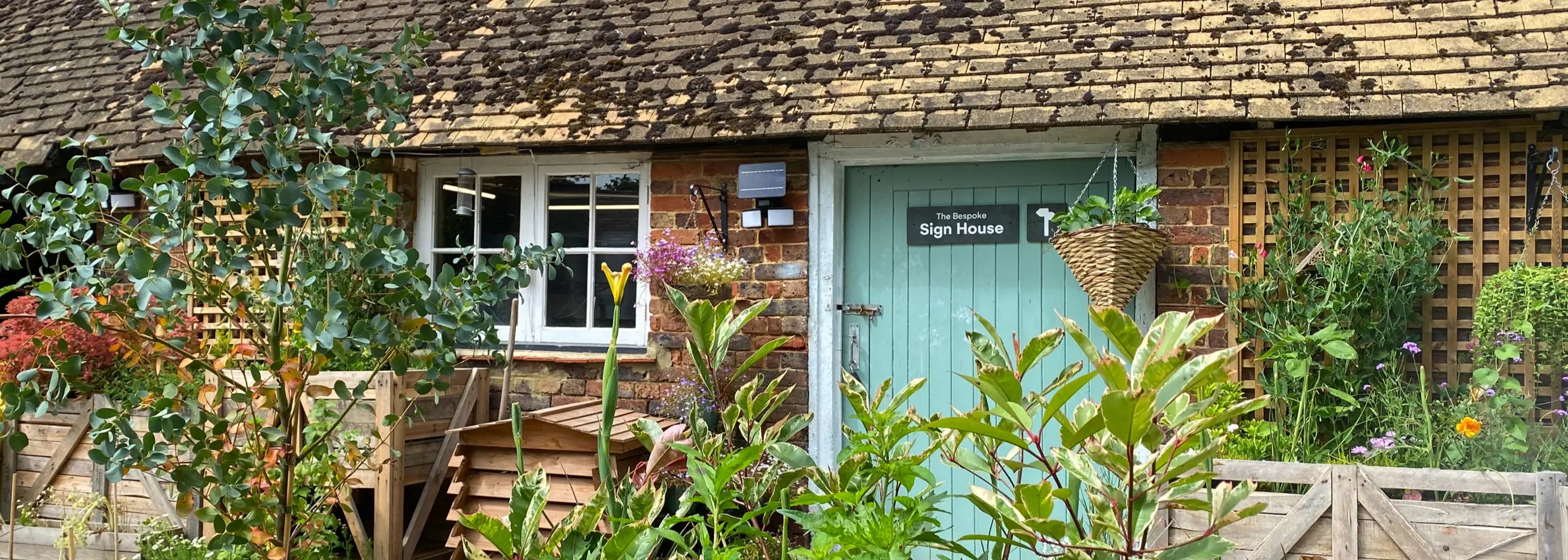What makes someone fall in love with a home? Or walk away before they’ve even stepped inside?
Our 2026 research reveals how first impressions, lighting, and even house numbers are set to shape UK property decisions in the year ahead.
From the garden gate to the front door, kerb appeal remains one of the strongest signals of how a home is cared for, and how it’s perceived.
That’s why The Bespoke Sign House undertook a nationwide survey of 1,000 UK adults, spanning homeowners, renters and first-time buyers, to understand how people really perceive property, kerb appeal and what will make a house feel like a “home” in 2026.
What to expect from UK homeowners and buyers as we enter 2026 according to our latest research - and how first impressions will continue to shape decisions in the year ahead.
- Homeownership Amongst Our Respondents: Among our respondents, half (50%) own their home with a mortgage, 24% own outright, and 23% rent. A small proportion live with parents (2%) or in shared ownership (2%).
- The 5-year dream: 44% of non-homeowner respondents said they hope to buy within five years, while 26% said they aren’t sure they ever will.
- Barriers to buying: Over half (53%) say house prices are too high, followed by deposit saving (48%), the cost of living (33%), and insufficient income (25%).
- First impressions rule: 27% have rejected a property instantly based on its exterior, and a further 31% say it played a role in their decision.
- Why Buyers Lower Their Offer: 66% say damaged roofs or gutters would make them reduce an offer, followed by peeling paint (45%), poor landscaping (38%), neglected driveways (36%) and scruffy neighbouring properties (34%).
- Upgrades Sellers Invest In: Gardens top the list (58%), followed by exterior paintwork (50%), roof or window repairs (35%), and driveway improvements (30%). Around one in four sellers also upgraded their lighting or front door (both 25%).
- Pre-sale spend: Sellers typically invest small but strategic amounts. A quarter (25%) spent between £1,000 and £5,000, while almost half (47%) kept costs under £1,000. Only one in ten (11%) spent more than £10,000 preparing their home for sale.
- Agent advice: Just three in ten sellers (30%) say their estate agent offered guidance on how to boost their home’s appeal. When advice was given, it focused mainly on quick visual fixes - fresh paintwork (52%), garden improvements (41%) and a new or repainted front door (37%).
- Why buyers walk away: Visible neglect remains the biggest deal-breaker — 39% were put off by signs of disrepair, 37% by peeling paint, and 36% by neighbouring homes in poor condition.
- Neighbours matter: Nearly one in three people (32%) say they’ve felt embarrassed by a neighbour’s property. A reminder that kerb appeal doesn’t end at your own front gate.
- Superstition is real: One in five buyers (21%) say they’d avoid an “unlucky” house number altogether, while another quarter (25%) admit they might be swayed depending on the price.
- Regional differences: Superstition peaks in Belfast, where half (50%) would avoid an “unlucky” number, compared to just 3% in Norwich, the least superstitious city in the UK.
- Lighting habits: Two-thirds of homeowners (66%) have outdoor lighting, most often for practical reasons such as visibility (37%) or security (31%). Only a small number installed it purely for aesthetics (16%).
Editors Note
What stood out most in this research is how instinctive the UK housing market remains.
Even in a world of mortgage calculators and property data, people still buy - and hesitate - with their eyes. A cracked gutter, a fading door, or even an “unlucky” number can sway emotion more than logic.
Interestingly, homeowners and buyers often value different things. Agents focus on quick visual fixes, yet buyers look deeper - for homes that feel well cared for.
It’s a reminder that presentation sells, but maintenance earns trust. Whether it’s a number on the door, the light at the entrance, or the neighbour’s home next door, perception still holds quiet power.
Looking ahead to 2026, it’s clear that these instincts will continue to guide the market. Presentation will still open doors, but care and authenticity will be what make a home truly stand out.
Kristian Goodenough
Co-Founder, The Bespoke Sign House
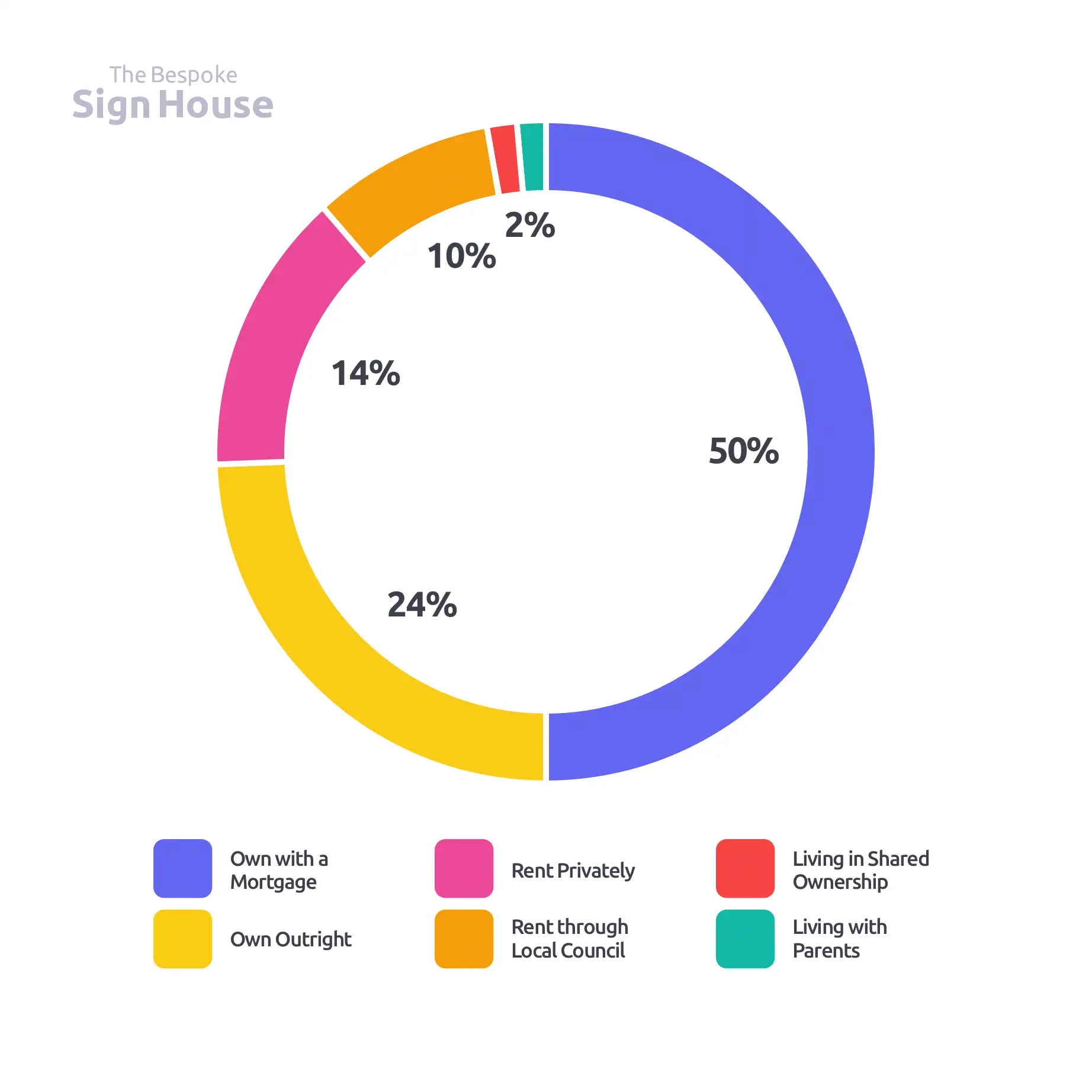
Housing Tenure & Aspirations
The Picture Today: Half of UK adults (50%) own a home with a mortgage, while just under a quarter (24%) own outright. Renting remains a major part of the mix: 14% rent privately, and 9% rent through a council or housing association. Shared ownership and living rent-free with family each account for 2%.
Ownership rises sharply with age: only 3% of 35-44 year-olds own outright, but this jumps to 71% among over-65s. Regionally, Sheffield leads for outright ownership (46%), while London and Belfast top the “mortgage” category (58%).
The Path to Purchase: Among non-owners, optimism and anxiety coexist. Nearly one in five (19%) hope to buy within 1–2 years, and a further 25% within 3–5 years. Yet a striking 26% say they’re unsure they’ll ever be able to buy, while 17% are content renting or living with family.
Headline Insight: A quarter of renters fear they’ll never own, yet almost half still hope to buy within five years.
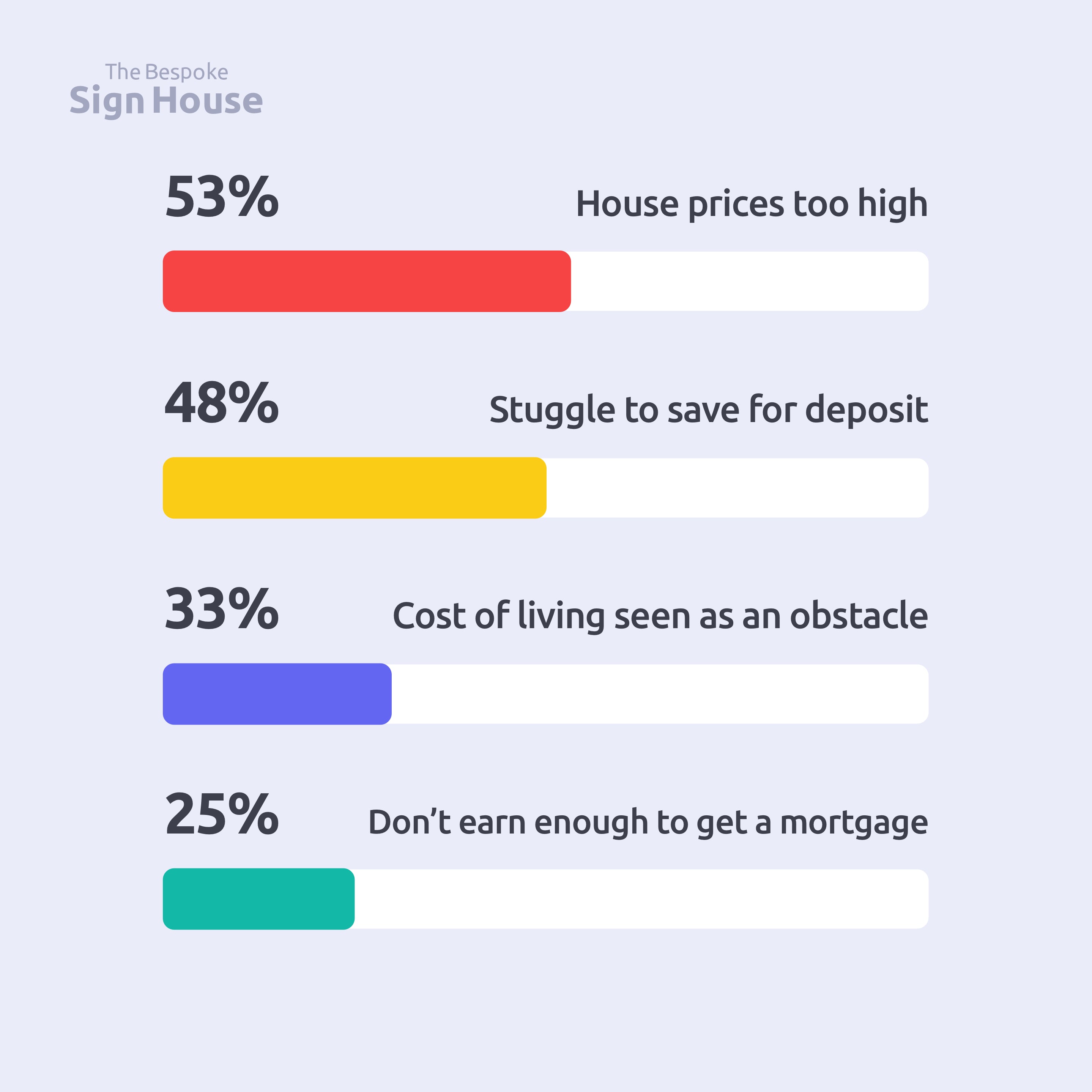
Why Buyers Are Blocked
Affordability remains the defining challenge. Over half (53%) say house prices are too high, while 48% struggle to save a deposit. Another third (33%) cite the cost of living as the main obstacle, and one in four (25%) say they simply don’t earn enough to qualify for a mortgage.
Younger respondents (18–24) are most concerned about high prices (68%), while older working-age groups (35–54) report the biggest deposit struggles (42–56%).
Looking regionally, Northern Ireland (67%) and Wales (59%) feel the sharpest price pressure, while the South West (58%) worries most about deposits.
The housing crisis isn’t about mindset, it’s about affordability, and the maths proves it: prices have long outpaced income.
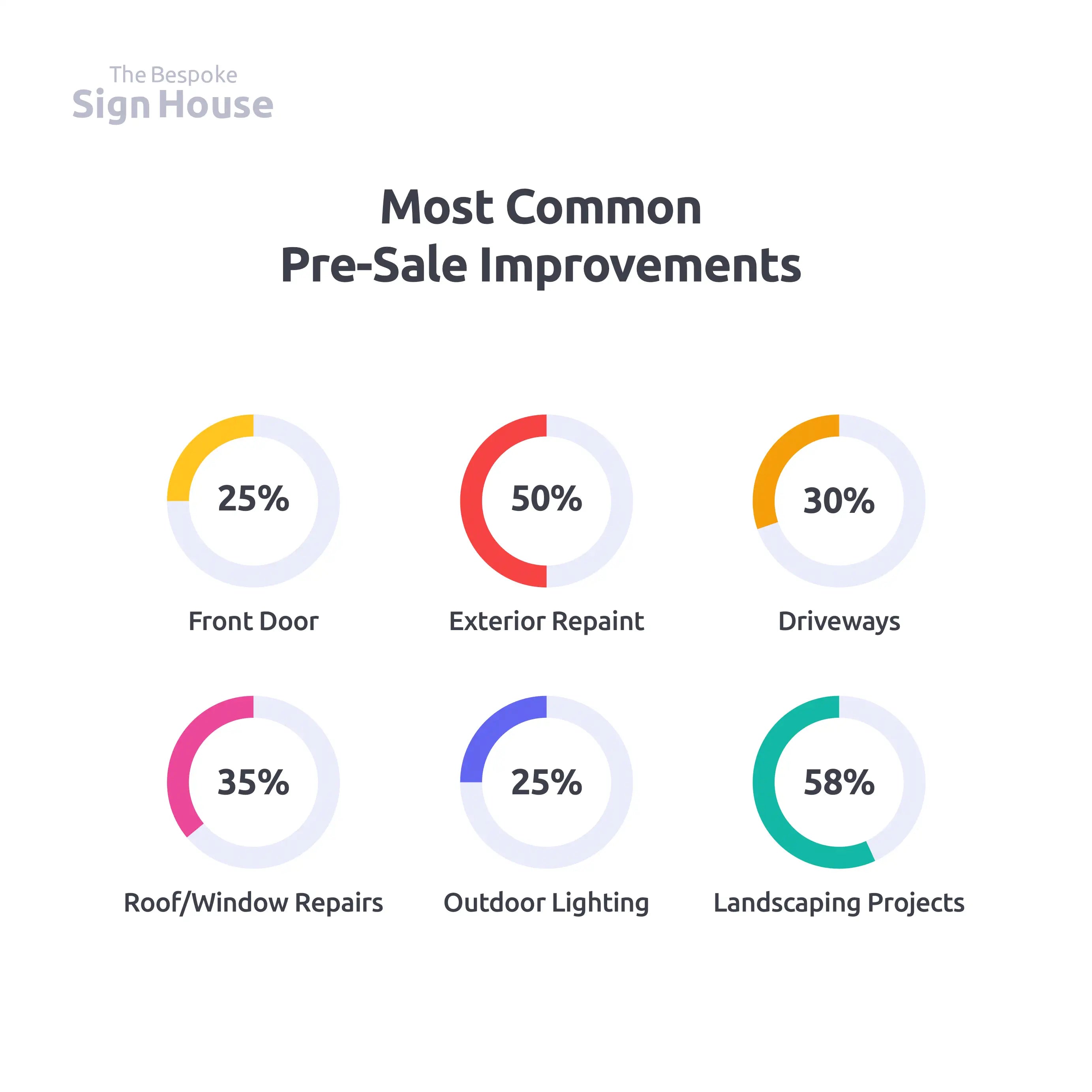
What Sellers Actually Do (and Spend)
Sellers are catching on. Over half (58%) invested in garden or landscaping improvements, 50% repainted exteriors, and 35% repaired roofs or windows. Driveways (30%), outdoor lighting (25%) and front doors (25%) also ranked highly.
Most sellers spend strategically rather than lavishly - 47% kept it under £1,000, while just 11% invested £10,000 or more.
Rule of thumb: The sweet spot for boosting kerb appeal is between £1,000 and £5,000 - enough to impress without overcapitalising.
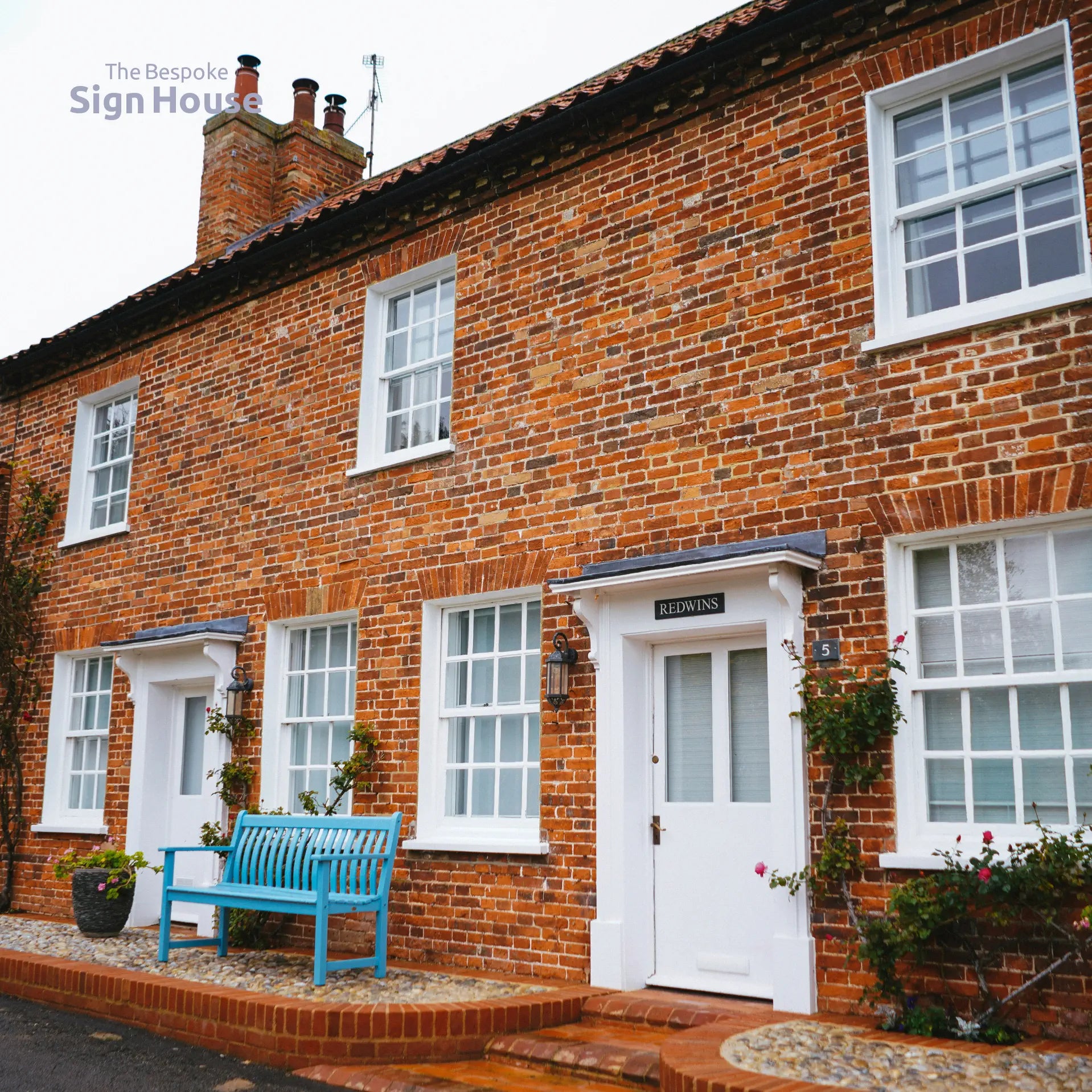
First Impressions: Kerb Appeal Really Does Decide Deals
More than half of people (58%) admit they’ve rejected a property at least partly based on its exterior, and for over a quarter (27%), the decision was instant.
One respondent described turning down an otherwise ideal home because “the front garden looked forgotten about.” That feeling of neglect sticks fast, and often even before a viewing even starts.
Top triggers to make buyers cut offers:
- Damaged roofs or gutters (66%)
- Peeling paint (45%)
- Poor landscaping (38%)
- Neglected driveways (36%)
- Scruffy neighbouring properties (34%)
Key Takeaway: The data shows that presentation catches the eye, but genuine upkeep is what builds buyer confidence.
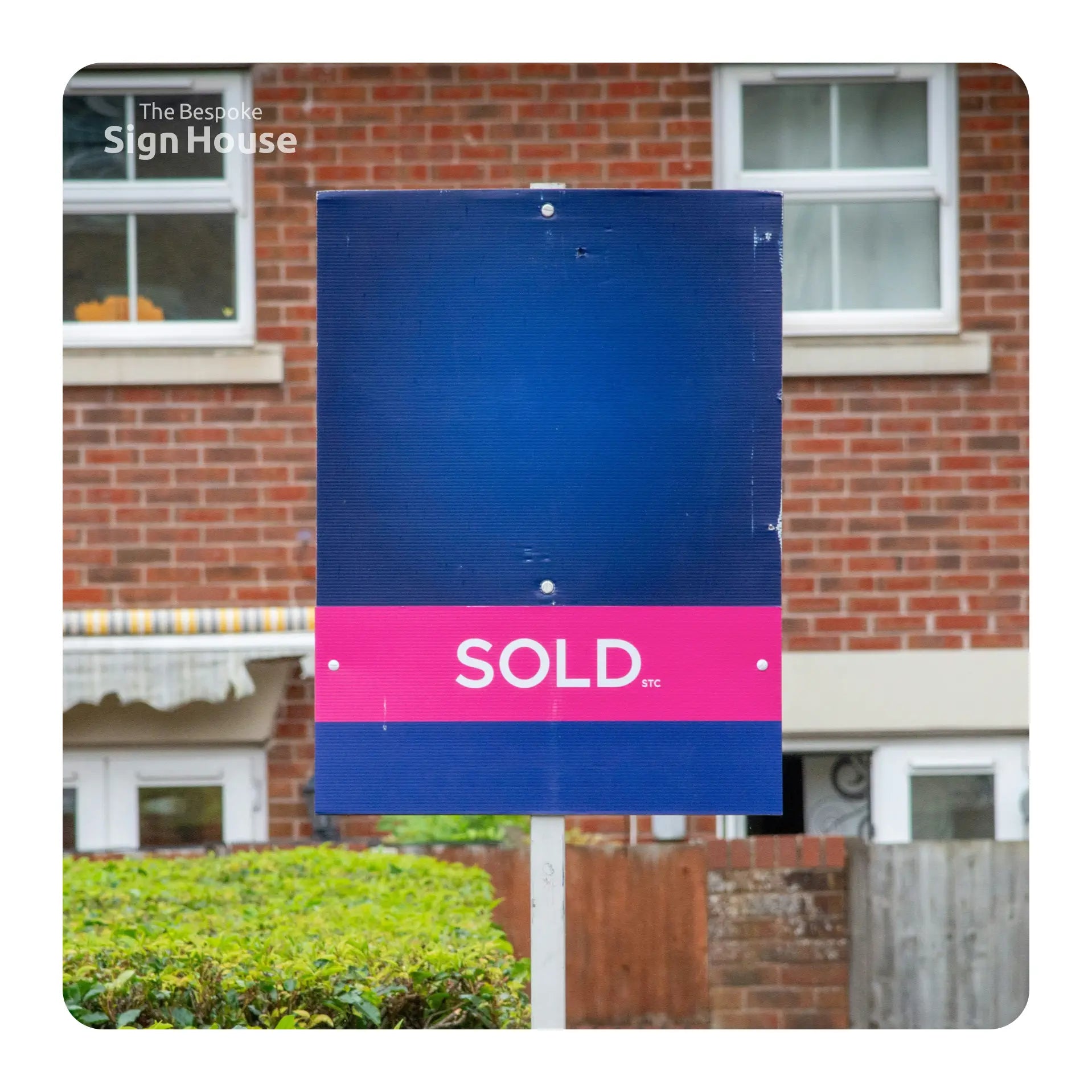
What Estate Agents Advise
Only 30% of sellers say their agent advised on upgrades. And when they do, advice tends to be cosmetic: fresh paint (52%), gardens (41%), and front doors (37%) lead the list.
That advice helps, but it misses the mark slightly. Buyers told us they care most about the state of the property, not just the shine.
Bottom Line: Agents can promote quick fixes; buyers notice lasting flaws.
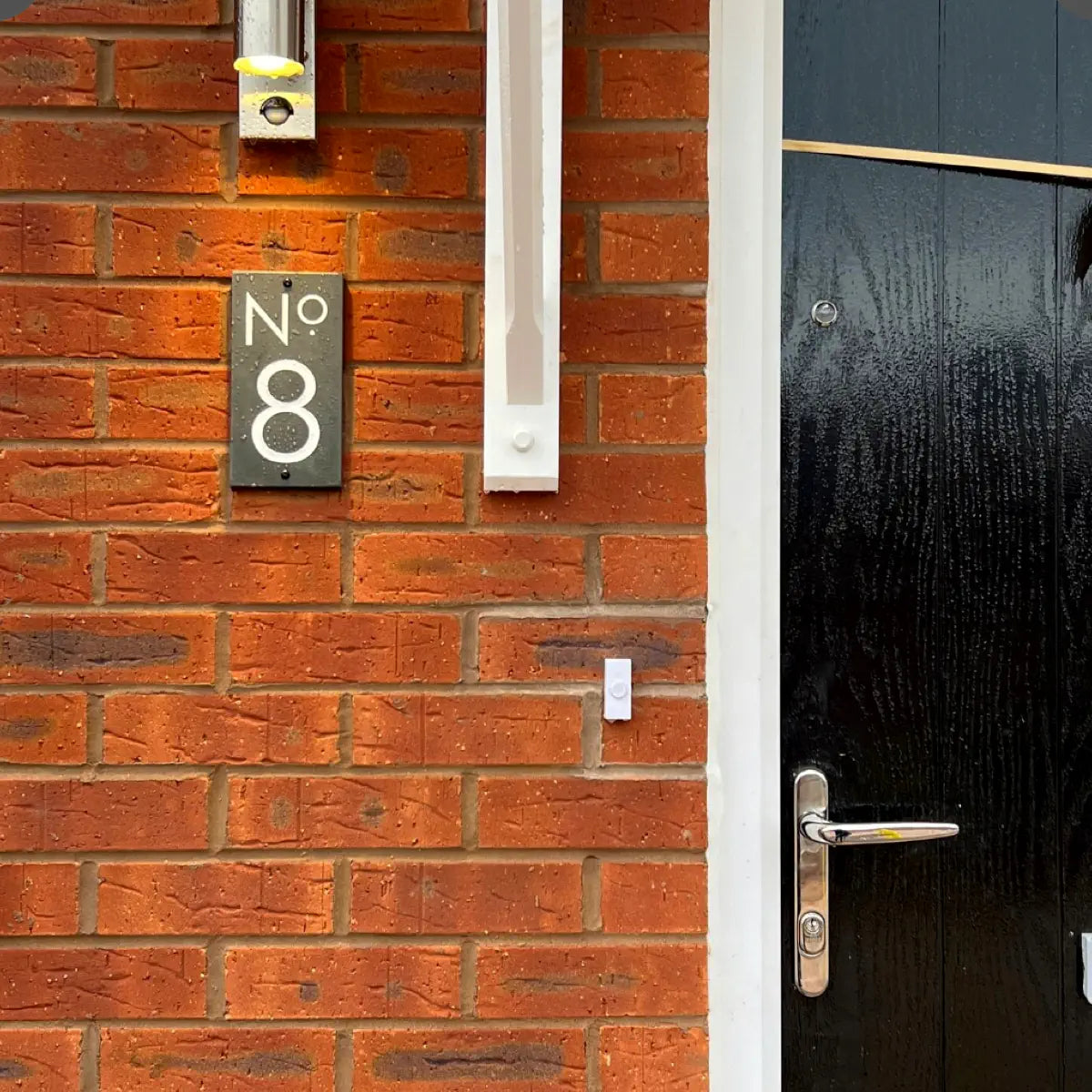
Outdoor Lighting: Common and Functional
Two-thirds of homeowners (66%) now have outdoor lighting - proof that it’s become a staple, not a luxury.
For most, it’s about practicality (37%) and security (31%), with only 16% installing lights purely for style. Adoption rises with age, peaking at 71% among 55–64s, and is most common in London (72%).
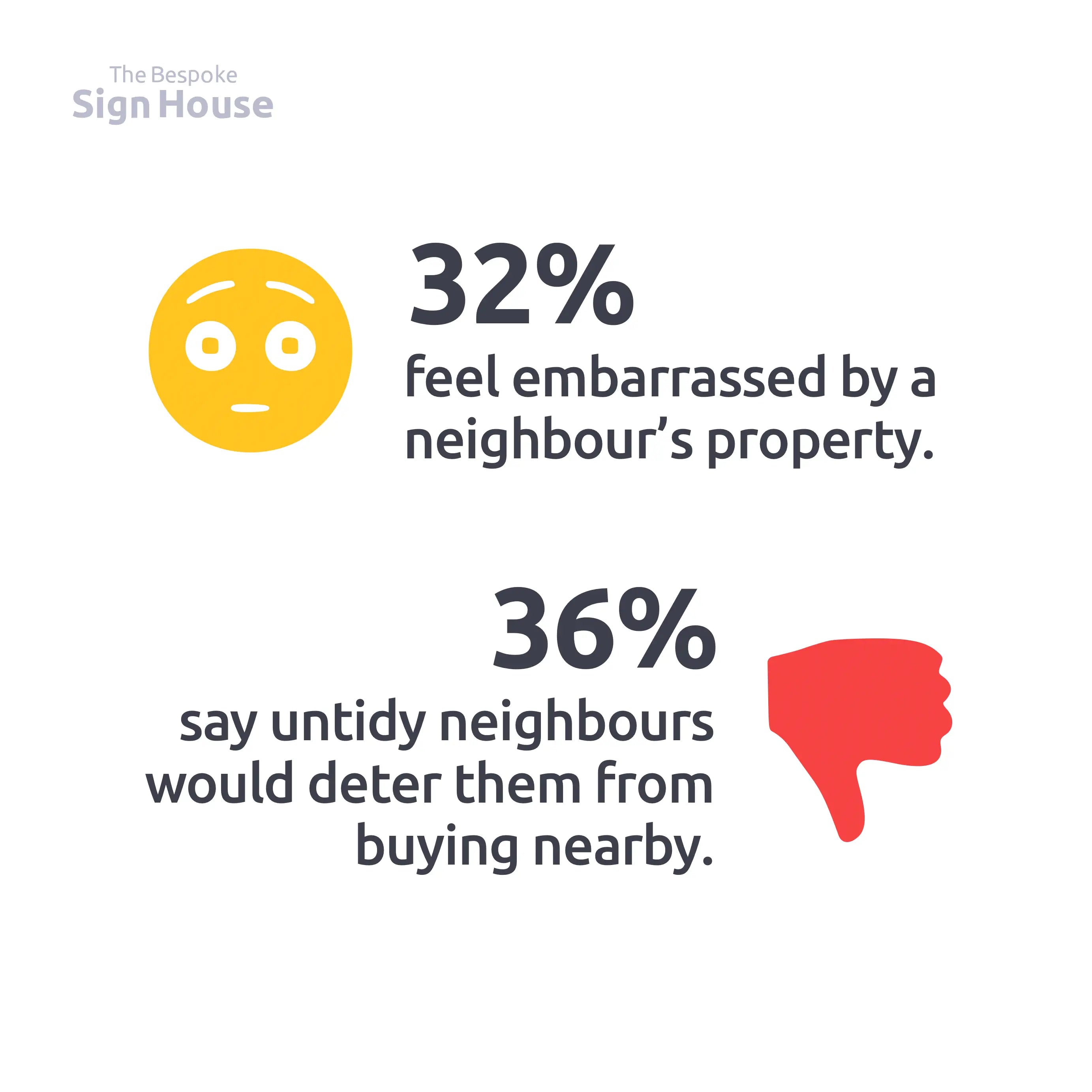
Neighbours Matter More Than You Think
Kerb appeal doesn’t stop at your own fence. Nearly one in three people (32%) feel embarrassed by a neighbour’s property, and 36% said poor neighbouring upkeep would deter them from buying nearby.
Sheffield leads for “neighbour embarrassment” (43%), while Bristol residents are most tolerant (19%).
Takeaway: A property’s appeal doesn’t stop at the boundary - neighbouring homes play a quiet but powerful role in how it’s seen and valued by potential buyers.
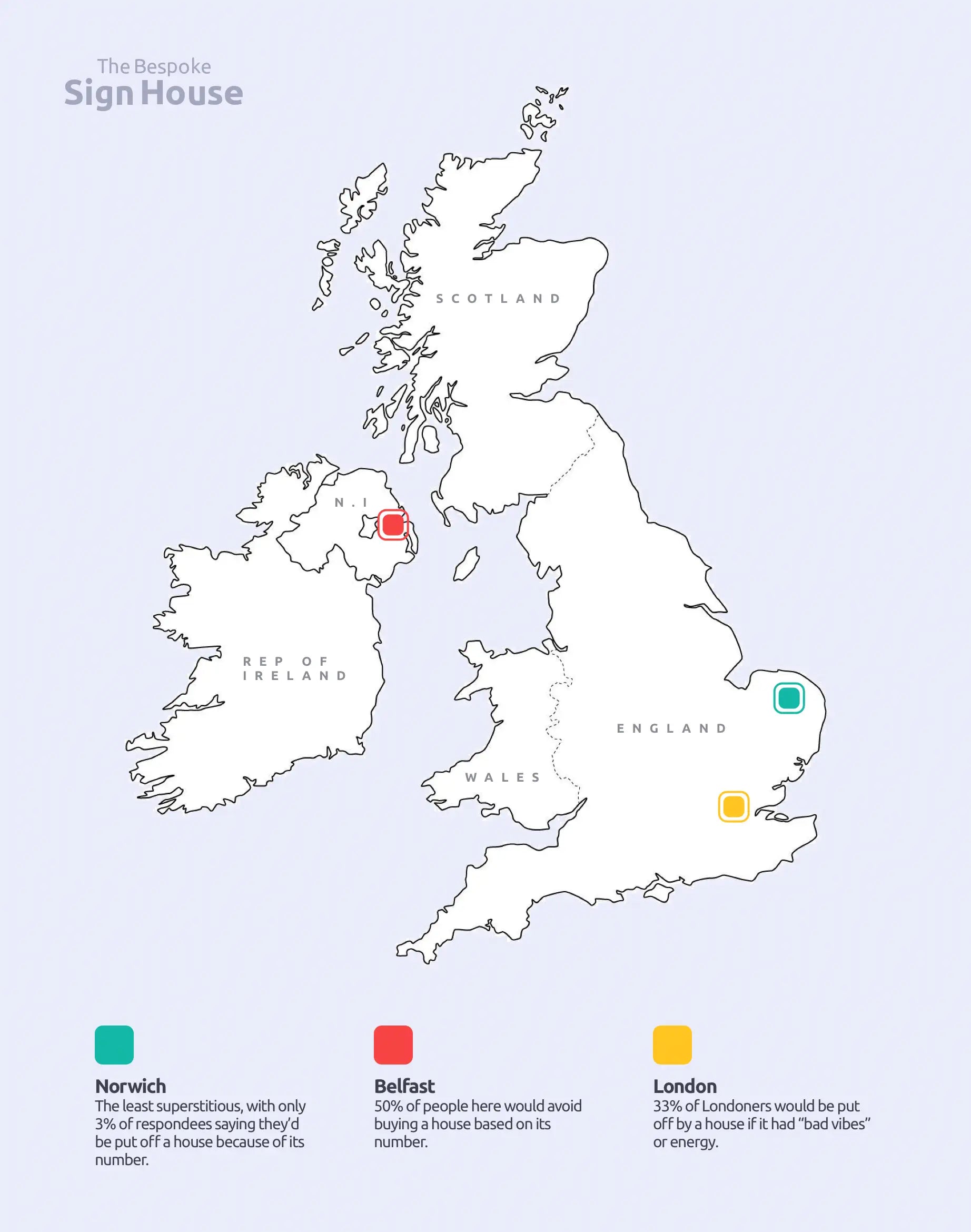
Superstition, Numerology & Buyer Psychology
Numbers still matter, and not just number 13. Almost half (46%) say a property’s number or name could influence them.
A fifth (21%) would definitely avoid an “unlucky” number, and another 25% said they might - depending on the price.
We’ve even seen this firsthand at The Bespoke Sign House, where some customers prefer to spell out their number (“Nine”) instead of using the numeral (“9”) on a slate sign.
Regional quirks add colour, with Belfast being the most superstitious (50% would avoid), while Norwich is the least superstitious in our survey (3%). Londoners are the most intuitive: a third (33%) say “bad vibes” or energy would put them off a property altogether.
Key Takeaway: Superstition may seem old-fashioned, yet the findings show emotion continues to influence how buyers see and select homes.
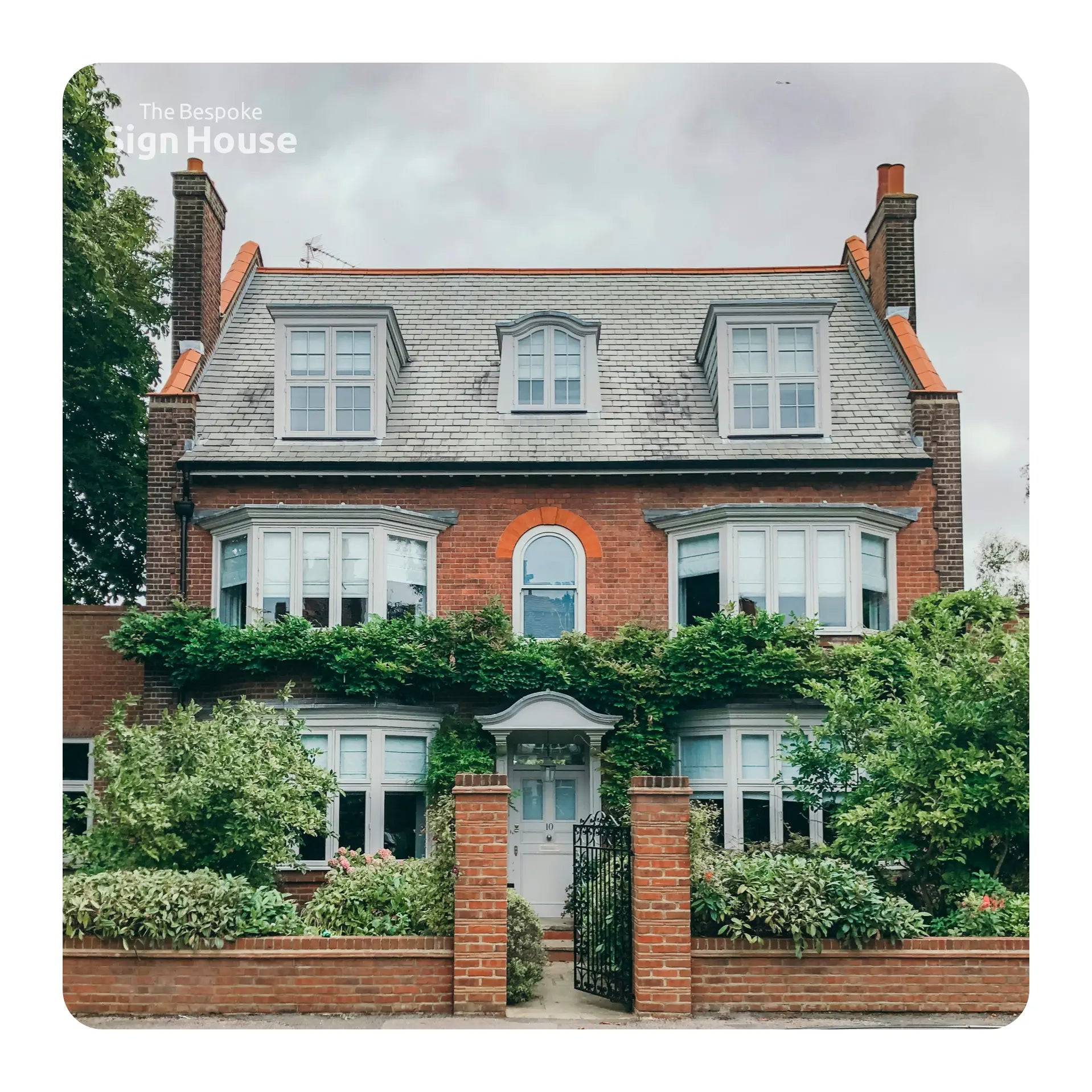
Cross-Cutting Themes
Beneath the numbers, a few patterns define the state of the UK housing market in 2025.
- Affordability dominates: financial limits continue to outweigh lifestyle preferences, leaving aspiration tempered by arithmetic.
- Perception is power: from numbers to neighbours, subtle cues still shape decisions faster than spreadsheets can.
- Cosmetics vs structure: sellers and agents often focus on surface fixes, but buyers are quick to spot (and punish) deeper neglect.
- Age divide: younger buyers are more visually and energy-sensitive, while older buyers tend to be pragmatic and maintenance-minded.
- Regional quirks: Belfast leads for superstition, Sheffield for ownership and neighbour pride, and London for lighting and detecting “bad vibes”.
About the Research
A nationally representative online survey of 1,000 UK adults, conducted by The Bespoke Sign House in August 2025. Results are reported at total level with selected age, region and city splits.
For media use, please credit: “The Bespoke Sign House, UK Home & Kerb Appeal Trends 2026.”
For press enquiries or bespoke data breakdowns, contact: hello@thebespokesignhouse.com


